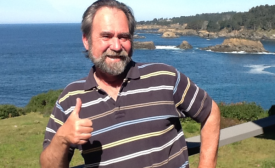center on public diplomacy

Research on heteropolarity, a new teaching position at the Diplomatic Academy of Vienna, and plans for a publication on science diplomacy.
Recently, we analyzed the mediated public diplomacy efforts of Angola in the United States. To facilitate this analysis, we content analyzed American news coverage (by examining The Wall Street Journal and USA Today) from 2008 to 2015, as well as press releases from the Angolan embassy website, dating back to 2011. While the initial goal was to examine how CPD fellow Dr. Jami Fullerton’s Model of Country Concept might apply to a developing African nation, our findings also offered insights and suggestions for CPD’s research initiatives relating to Global Youth and Evaluation.
USC Annenberg's Center on Public Diplomacy (CPD) welcomes U.S. Under Secretary of State for Public Diplomacy and Public Affairs Richard Stengel on Wednesday, October 15, at 12:00 p.m., for a discussion entitled “Why We Need to Harden Our Soft Power.”
New Year resolutions are already aplenty, but we at CPD thought you might still be interested in knowing our goals for the year head. As CPD enters its 10th year, our mission remains the same. Our work continues to be guided by a global vision, a drive to integrate research and practice for distinctive social impact, and a commitment to preparing the next generation of public diplomacy leaders and practitioners.

New Year resolutions are already aplenty, but we at CPD thought you might still be interested in knowing our goals for the year ahead.
It is the summer of 2012 and America is debating whether to modernize a piece of 1948 legislation on U.S. public diplomacy called the Smith-Mundt Act. At a time when American officials are racing to keep pace with the new communication technologies and trying to “out-communicate” the terrorists, not just other nations, the whole debate is mind-boggling.
In a couple of recent postings I have tried to elaborate the notion of a nation brand, to identify some of the salient issues surrounding the relationship between public diplomacy and branding, and to illuminate the more subtle distinctions. In this entry, I would like to drill down further into each of these, and several related issues.







